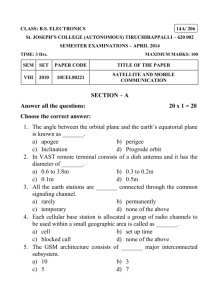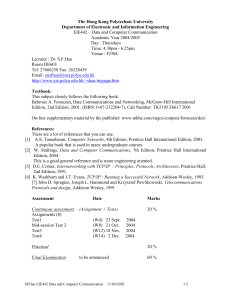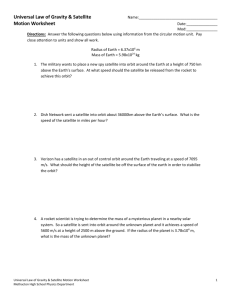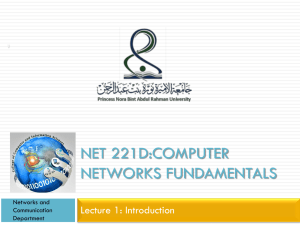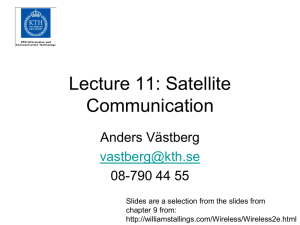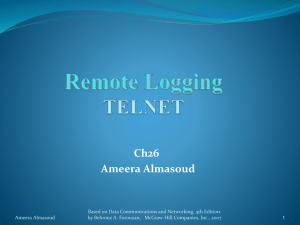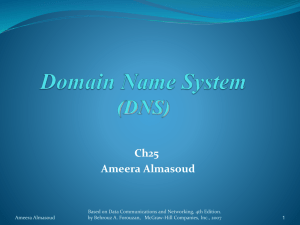LAB-5 Wireless Networks Question No 1: What is the period of the
advertisement
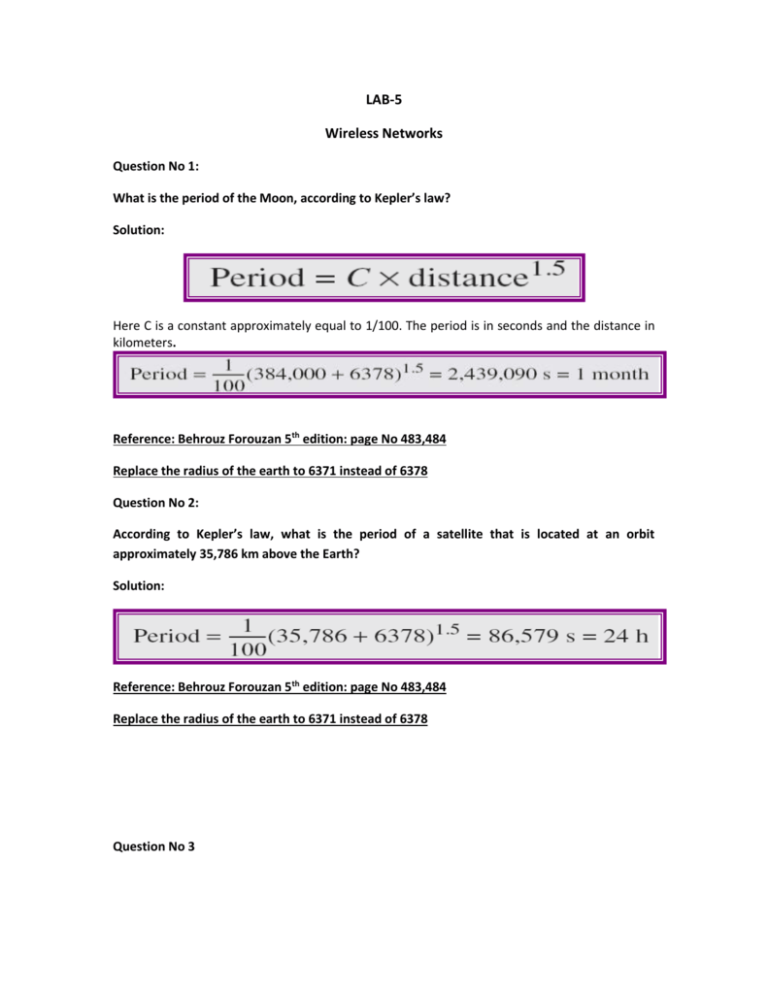
LAB-5 Wireless Networks Question No 1: What is the period of the Moon, according to Kepler’s law? Solution: Here C is a constant approximately equal to 1/100. The period is in seconds and the distance in kilometers. Reference: Behrouz Forouzan 5th edition: page No 483,484 Replace the radius of the earth to 6371 instead of 6378 Question No 2: According to Kepler’s law, what is the period of a satellite that is located at an orbit approximately 35,786 km above the Earth? Solution: Reference: Behrouz Forouzan 5th edition: page No 483,484 Replace the radius of the earth to 6371 instead of 6378 Question No 3 We want to put a satellite in a circular orbit at 500 km above the surface (LEO Orbit).What will be the speed of rotation required. Given the following: 𝐆 = 𝟔. 𝟔𝟕 × 𝟏𝟎−𝟏𝟏 𝐑 = 𝐑𝐚𝐝𝐢𝐮𝐬 𝐨𝐟 𝐭𝐡𝐞 𝐞𝐚𝐫𝐭𝐡 = 𝟔𝟑𝟕𝟏 𝐊𝐦 = 𝟔𝟕𝟑𝟏𝟎𝟎𝟎𝐦 𝐌𝐚𝐬𝐬 𝐨𝐟 𝐞𝐚𝐫𝐭𝐡 𝐌 = 𝟓. 𝟗𝟖 × 𝟏𝟎𝟐𝟒 𝒌𝒈 Solution: 𝑣=√ 𝐺𝑀 𝑟 Where r=distance from the center of earth=6731+500=7231 Km=7231000m 𝟔. 𝟔𝟕 × 𝟏𝟎−𝟏𝟏 ∗ 𝟓. 𝟗𝟖 × 𝟏𝟎𝟐𝟒 𝑚 𝑣=√ ( ) 7231000 𝑠 Question No 4: From the following graph, explain the relationship between the satellite parameters, Coverage, Period and Delay with the orbital height of the satellite. Solution: We can see from the figure that with an increase in the orbital height, the coverage area, Period of rotation and the delay increases. Reference William Stallings: Wireless Communication and Networks second edition Page 241 Question No 5: From the following curve, Explain the relationship between the capacity with the number of accesses or channels for FDMA and TDMA. Solution: Note the dramatic drop in capacity of FDMA as the number of channels increase. By contrast, TDMA drops much more slowly as the number of time slots (channels) increase . Reference William Stallings Wireless Communications and networks: Second Edition Page 259 Channelization Question 1: Find the chips for a network with a. Two stations b. Four stations Solution: We can use the rows of W2 and W4 in the figure a. For a two-station network, we have [+1 +1] and [+1 −1]. b. For a four-station network we have [+1 +1 +1 +1], [+1 −1 +1 −1], [+1 +1 −1 −1], and [+1 −1 −1 +1]. Question No 2: What is the number of sequences if we have 90 stations in our network? The number of sequences needs to be 𝟐𝒎 . We need to choose m = 7 and N = 27 or 128. We can then use 90 of the sequences as the chips. Question No 3: Prove that a receiving station can get the data sent by a specific sender if it multiplies the entire data on the channel by the sender’s chip code and then divides it by the number of stations. Solution: Let us prove this for the first station, using our previous four-station example. We can say that the data on the channel D = (d1 ⋅ c1 + d2 ⋅ c2 + d3 ⋅ c3 + d4 ⋅ c4). The receiver that wants to get the data sent by station 1 multiplies these data by c1. We then divide by N we get d1. Reference: Behrouz forouzan: Fifth Edition: Chapter 12, Page 350 and 351
